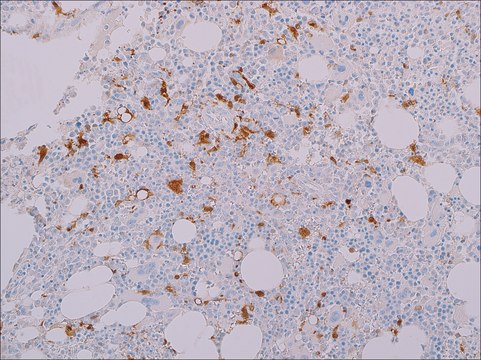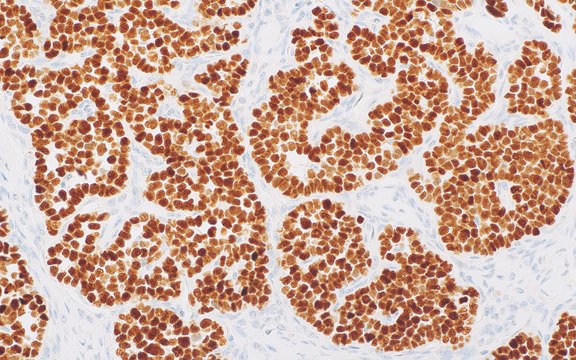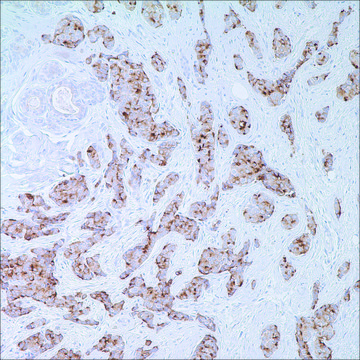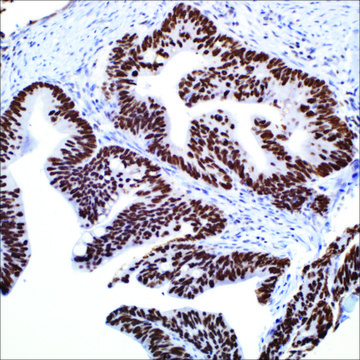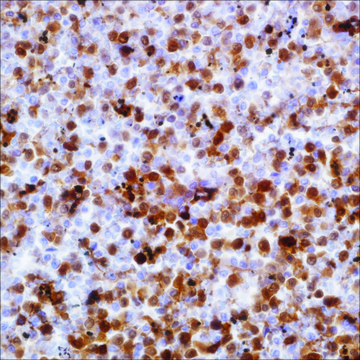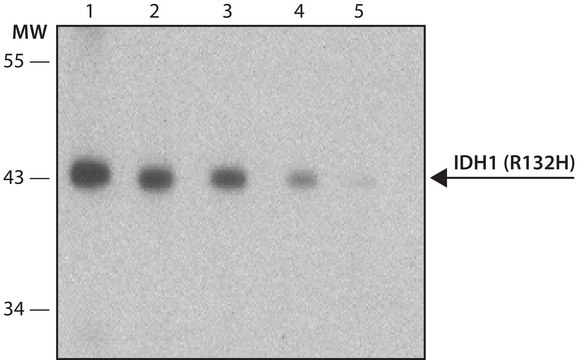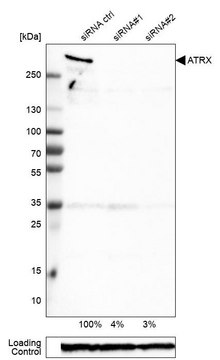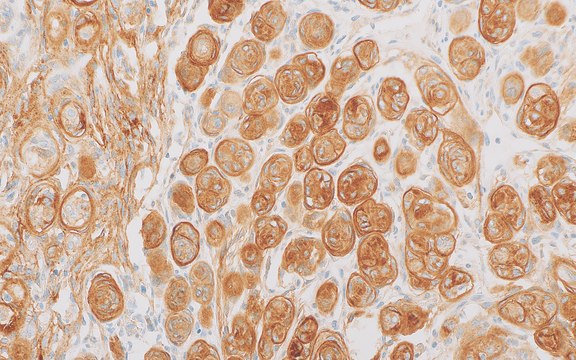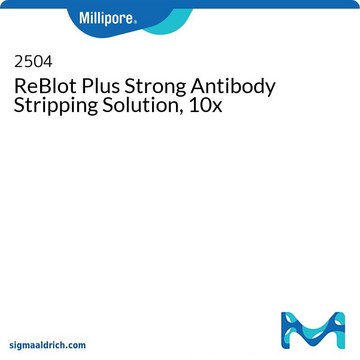推荐产品
生物来源
rabbit blood
质量水平
100
500
偶联物
unconjugated
抗体形式
IgG fraction of antiserum
抗体产品类型
primary antibodies
描述
For In Vitro Diagnostic Use in Select Regions
表单
buffered aqueous solution
种属反应性
human
包装
vial of 0.1 mL (concentrate (485A-14))
vial of 0.1 mL (concentrate (485A-14-RUO) Research Use Only)
vial of 0.5 mL (concentrate (485A-15))
vial of 1.0 mL (concentrate (485A-16))
vial of 1.0 mL (concentrate (485A-16-RUO) Research Use Only)
vial of 1.0 mL (concentrate (485A-17-RUO) Research Use Only)
vial of 1.0 mL (pre-dilute ready-to-use (485A-17))
vial of 7.0 mL (concentrate (485A-18-RUO) Research Use Only)
vial of 7.0 mL (pre-dilute ready-to-use (485A-18))
制造商/商品名称
Cell Marque®
技术
immunocytochemistry: suitable (formalin-fixed, paraffin-embedded sections 1:50-1:50 (concentrated))
同位素/亚型
IgG
控制
astrocytoma, brain, glioblastoma, oligodendroglioma
运输
wet ice
储存温度
2-8°C
可视化
nuclear
一般描述
质量
Canada - RUO
European Union - IVD
Japan - RUO
外形
制备说明
Note: This requires a keycode which can be found on your packaging or product label.
其他说明
法律信息
未找到合适的产品?
试试我们的产品选型工具.
储存分类代码
12 - Non Combustible Liquids
WGK
WGK 2
法规信息
历史批次信息供参考:
分析证书(COA)
我们的科学家团队拥有各种研究领域经验,包括生命科学、材料科学、化学合成、色谱、分析及许多其他领域.
联系技术服务部门
